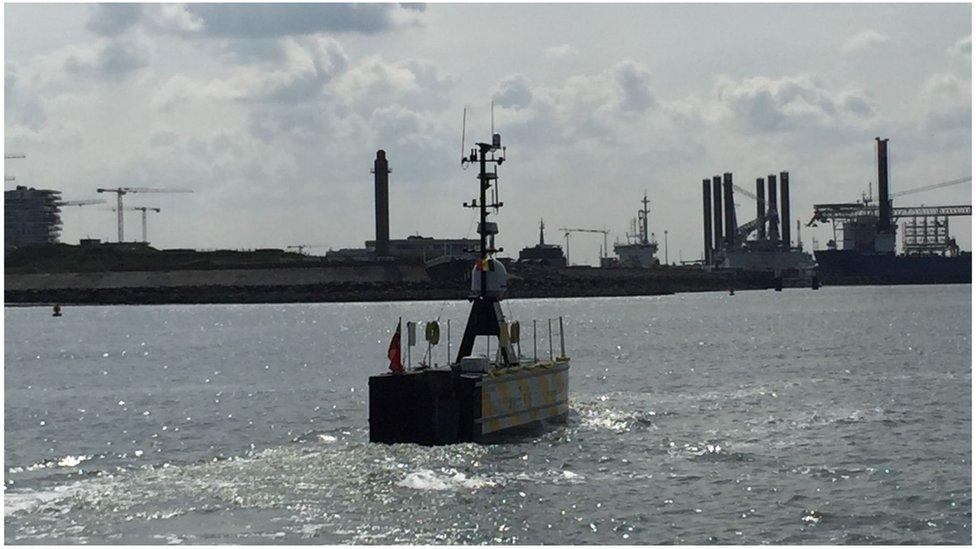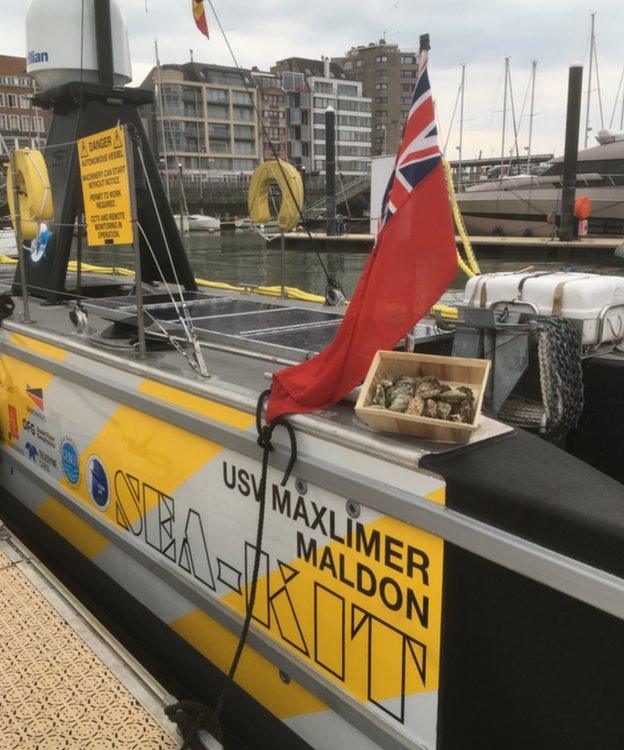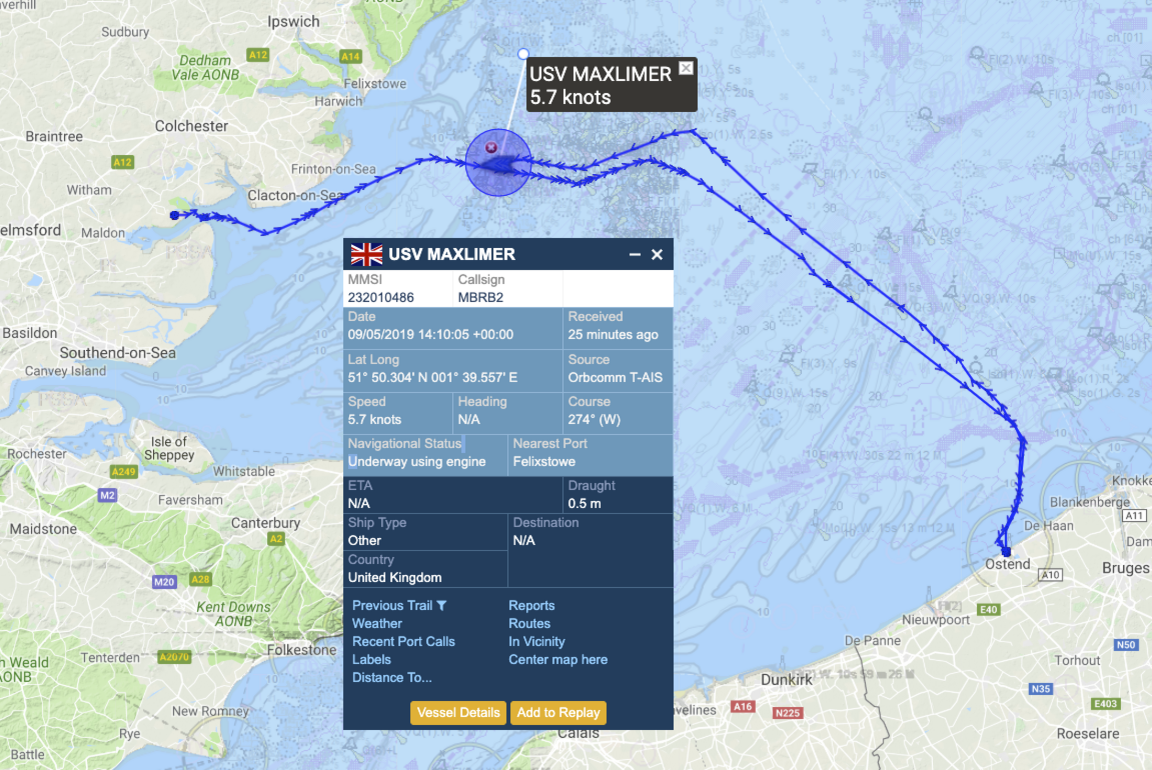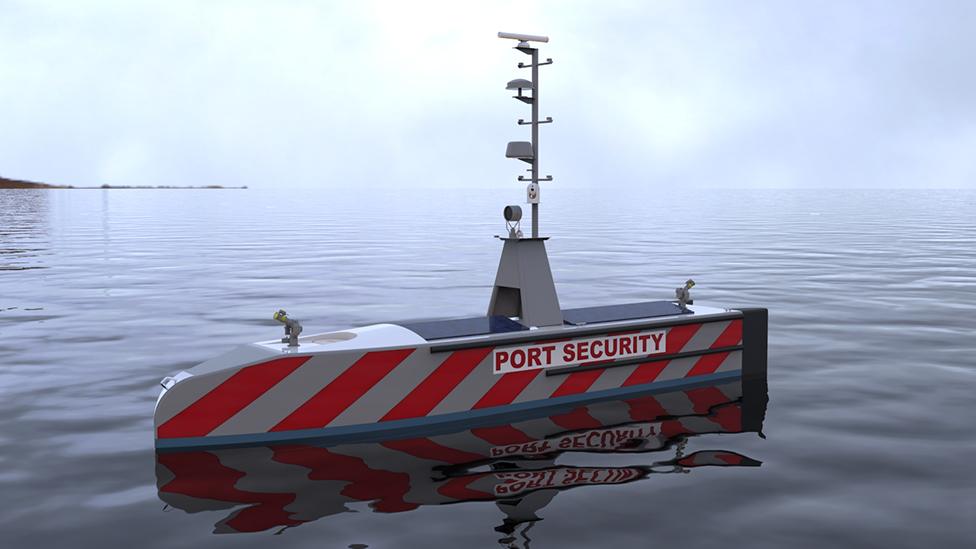Autonomous boat makes oyster run
- Published

The boat arrived at the Belgian port early on Tuesday
In a sign of things to come, an autonomous boat has just made a cargo run from the UK to Belgium.
The 12m-long Uncrewed Surface Vessel (USV) SEA-KIT Maxlimer crossed from West Mersea to Oostende on Monday night, carrying a box of oysters.
It relied on a range of technologies to safely navigate what is one of the busiest shipping lanes in the world.
The boat's owner says the trip was the first commercial crossing of the North Sea to be made by an autonomous vessel.
"This voyage has been months in the making, and to see it all come together is amazing," said Ben Simpson of SEA-KIT International Ltd.
“[The USV's] potential lies in its ability to be adapted to a range of tasks, whether it be transit, hydrographic surveys, environmental missions, or marine safety and security. We’re tremendously excited to push the technology to its limits and see what we can achieve."
On Thursday, the boat was making the return journey, again uncrewed but with a consignment of Belgian beer.

Oysters in Oostende: The USV has a maximum payload capacity of 2.5 tonnes

The SEA-KIT USV Maxlimer makes use of a communications and control system known as Global Situational Awareness via Internet.
This allows an operator to remotely access CCTV footage, thermal imaging and radar through the boat, as well as listen live to the USV’s surroundings and even communicate with others in the vicinity.
The Monday into Tuesday crossing took 22 hours in total; the vessel moves slowly at only a few knots.
The boat was originally developed to launch and recover an AUV
The 5kg shellfish consignment is well below the maximum payload capacity of 2.5 tonnes, but it was the demonstration of capability that was the point of the exercise.
Several agencies supported the crossing, including the Maritime and Coastguard Agency, the Department for Transport, the Foreign and Commonwealth Office, the European Space Agency, as well as partners in Belgium.

The boat was returning on Thursday with some Belgian beer
Designed by Hushcraft Ltd in Tollesbury, Essex, SEA-KIT Maxlimer was originally developed for the GEBCO-Nippon Foundation Alumni Team and its entry in the Shell Ocean Discovery XPRIZE.
This XPRIZE competition is seeking novel methods to map the seafloor, and the USV is able to deploy and recover a sonar-equipped autonomous underwater vehicle that will acquire bathymetric data.
"We can do the same work as traditional vessels but using a fraction of the fuel, just 5%," Mr Simpson told BBC News. "We're passionate about reducing carbon emissions and we look forward to doing more demonstrations and making this commercially viable."

SEA-KIT Uncrewed Surface Vessel (USV)

Future concepts: Many different applications are being considered for the boat
Dimensions: 11.75m long and 2.2m wide
Propulsion: Hybrid diesel-electric system
Range & speed: Up to 22,000km at 4 knots
Can fit inside a shipping container
But scalable. Larger versions being considered

